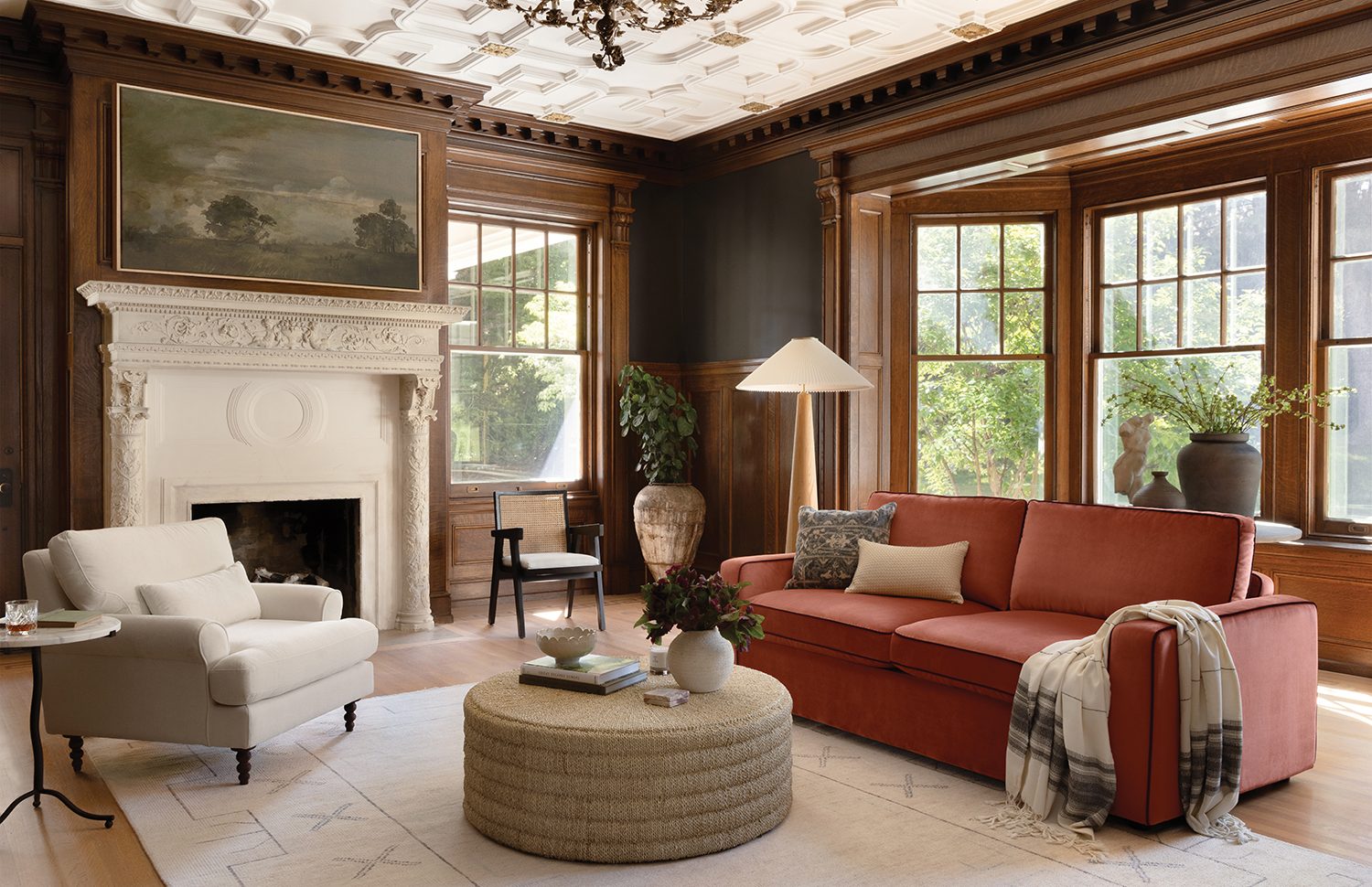When we survey Instagram or even our own design projects in search of fresh, inspiring trends, we’ve been noticing one commonality: mismatched furniture styles. Often spotted in warm minimalist and Scandinavian interiors, mixing furniture styles is a great way to add visual interest and texture to an otherwise pared-back look.
Even if you’ve never heard of this trend, you’ve likely seen it. Picture a vintage cane Pierre Jeanneret chair paired with a sleek marble coffee table, reclaimed wood stool, and a retro curved sofa a la CB2. The look is gathered, asymmetric, and offbeat in the best way. But, because it involves mixing and matching pieces from wildly different eras, it can be difficult to pull off without expert guidance.
So, we’re here to check that box with tips from Havenly lead designer Melissa Wagner. Find her expert advice below:
1. Repeat elements throughout the space.
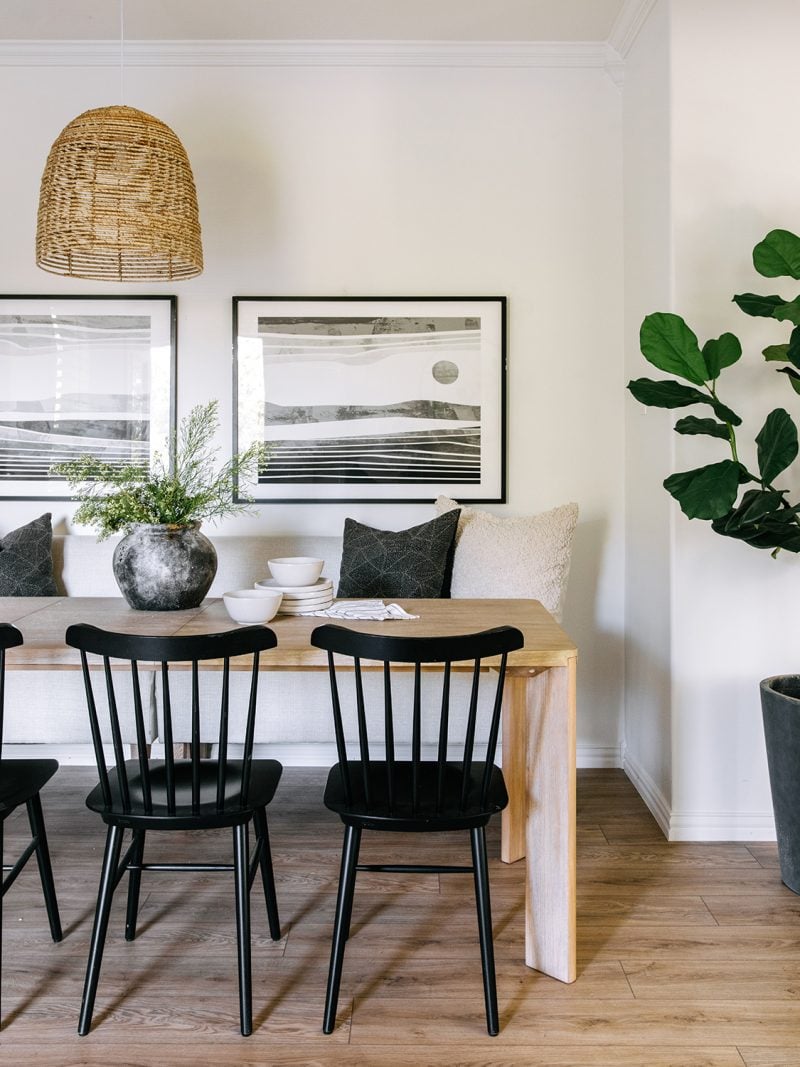
Homes with mismatched furniture styles need to have at least one binding design element. To create cohesion and tie the look together, repeat a chosen color, finish, material, or pattern two to three times in a single space to make the space feel curated and intentional. For example, pair black wood-trimmed chairs with black metal light fixtures, a bleached rattan light fixture with a cream marble table, linen pillows with sandy-toned drapery panels, or a high-gloss white console table with milk-glass sconces.
2. Decide on an atmosphere.
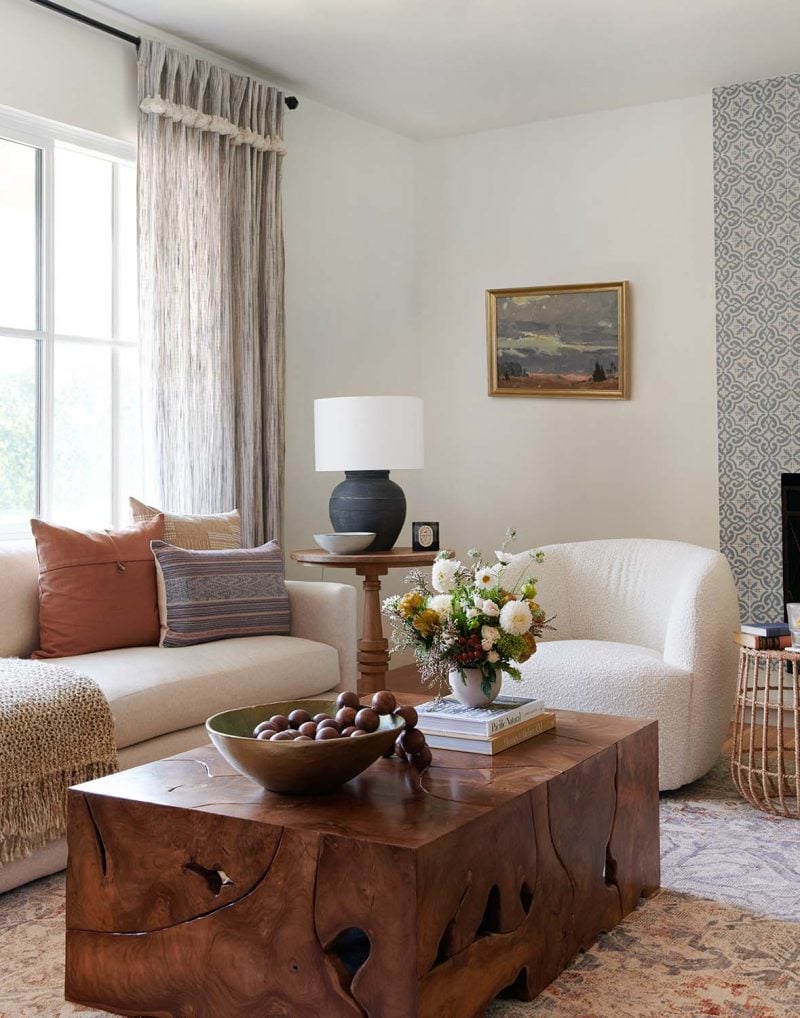
Atmosphere and mood can be another form of cohesion in eclectic homes. Do you want your space to be colorful? Moody? Bright and neutral? Luxurious? Zero in on what your overarching mood so you have a foundation to come back to when you’re unsure about a piece. It’s helpful to be able to stop and ask yourself, “Does this fit with my overall mood?” before making furniture purchases. For example, in this space the boucle accent chair, live edge coffee table, and plush modern sofa all read effortlessly cozy. Mood: check.
3. Balance, balance, balance.
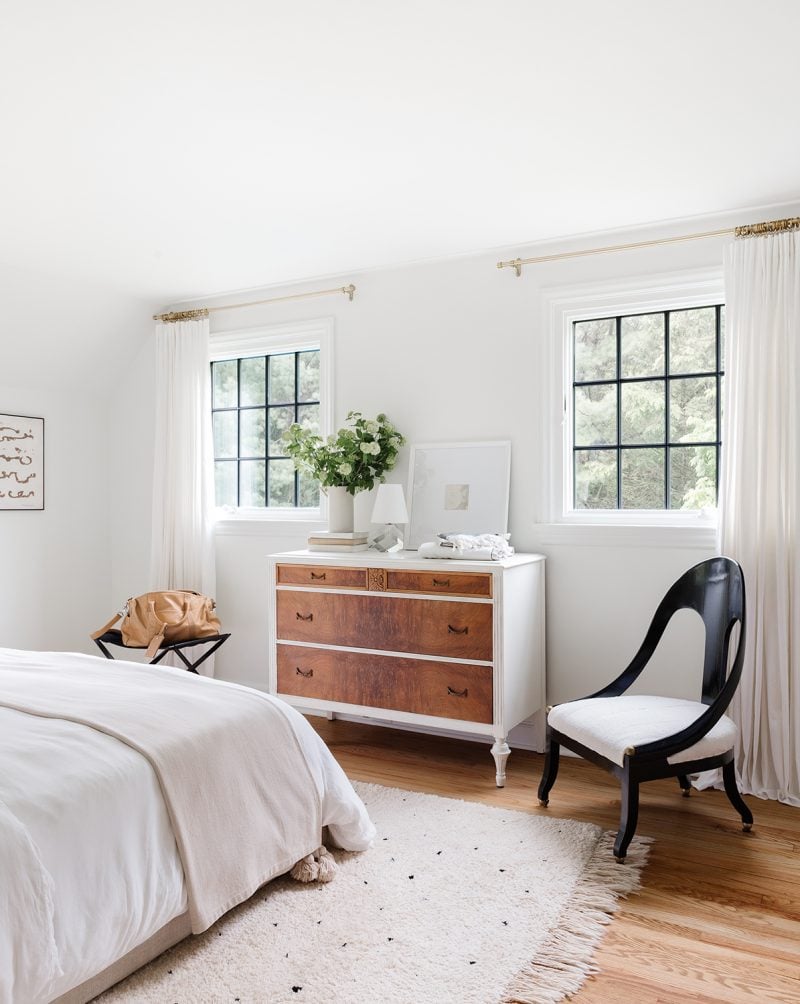
Cultivating balance, or the visual distribution of colors, patterns, silhouettes, and texture in a space, is absolutely essential when mixing furniture styles. One of Melissa’s go-to tips is to step back and squint — everything blurs just enough, and you’re able to look at things a bit more vaguely. Do colors feel evenly distributed throughout the space? (Yes, even neutral colors.) Does the scale of each create an even composition, even from your blurred vantage point? Does anything stick out? If so, it may need to be moved or nixed.
4. Start with a transitional foundation.
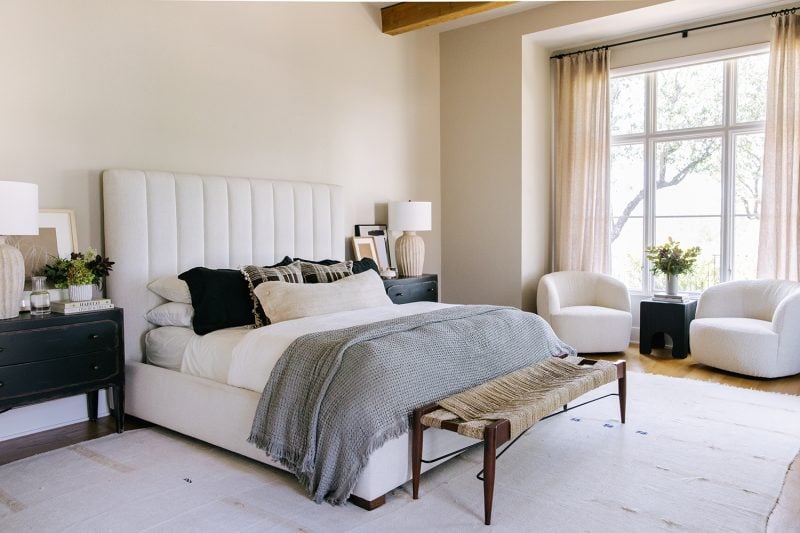
If you’re stuck, start by selecting a few simple, nondescript furniture pieces. Rather than selecting a velvet mid-century sofa and traditional accent chairs, for example, a neutral sofa that doesn’t necessarily subscribe to a specific design serves as a sort of blank canvas. Then, once you’ve selected the main players, you can fill in the look with smaller pieces from different eras and styles, like side tables, accent chairs, lamps, pillows, and artwork.
6. Alternatively, start with a statement piece.
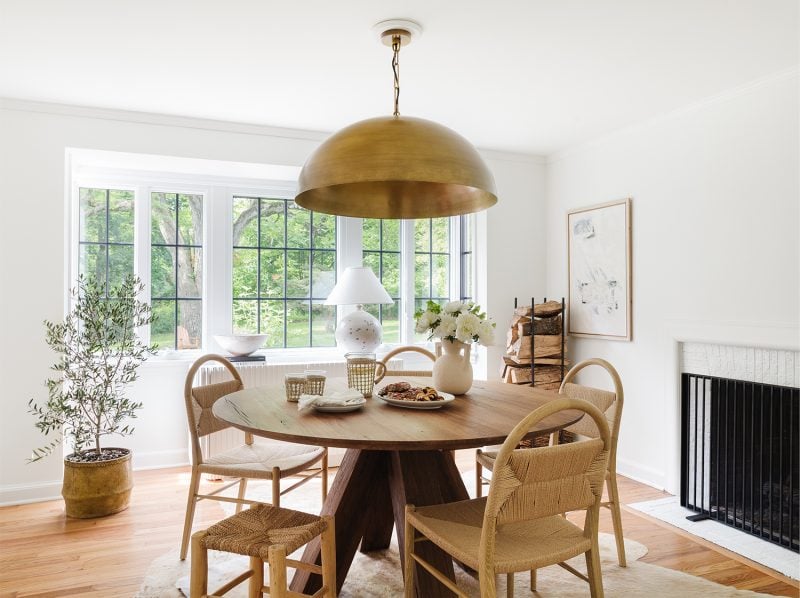
If the neutral approach is a dead end, do the opposite: select a statement piece you absolutely love, and build your design around it. Carry similar colors throughout the space, build off the design style, and select items that create balance and contrast.
6. Work with complementary textures and silhouettes.
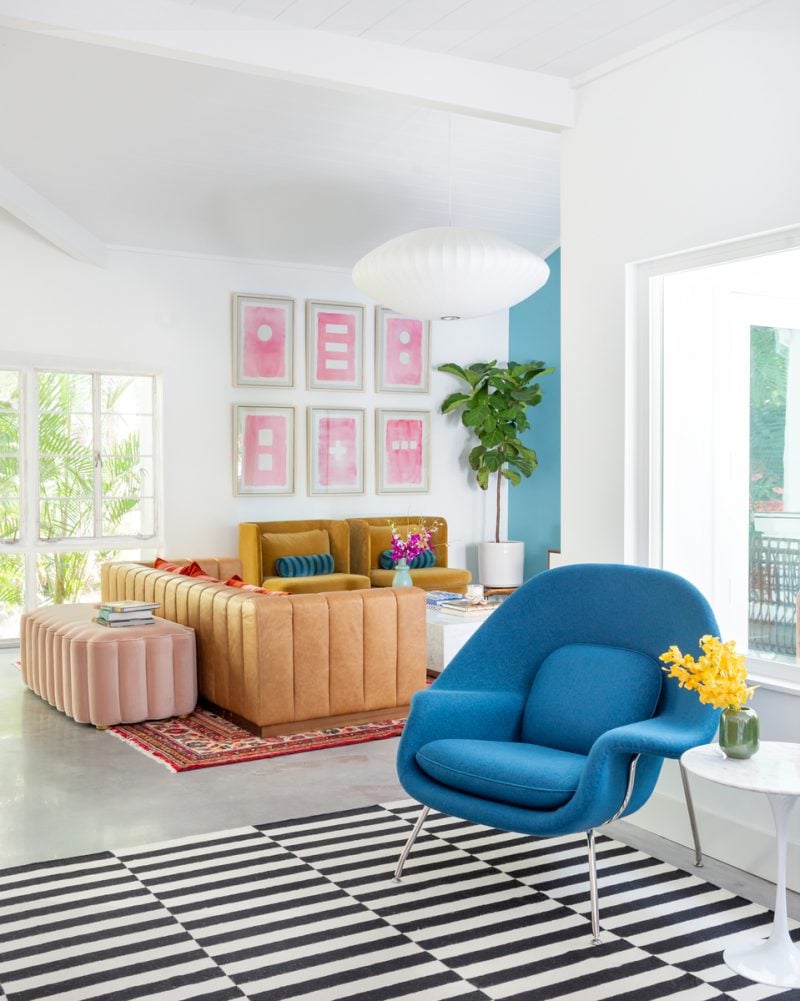
Contrast is a word you hear from designers all.the.time. It just means blending different elements to create a more visually intriguing space – which is the essence of what you’re doing when you mix furniture styles. However, keep in mind these tried-and-true designer-approved tricks to make the pairing process more seamless (and beautiful). When you’re working with different types of furniture, try mixing complementary textures and silhouettes so it’s not too matchy-matchy: this tufted leather sofa pairs wonderfully with iconic mid-century curved upholstered chairs. Other handy combos to bookmark.
Textures:
- Linen, marble, and distressed woods
- Upholstery alongside iron accents
- Velvet, brass, and polished woods
- Solid fabrics with patterned
Silhouettes
- Angular pieces with plush counterparts
- Streamlined furniture with curvaceous statement-makers
- Blocky to-the-ground elements (think a slipcovered sofa) with leggy chairs (or vice versa)
7. Simplify your color palette.
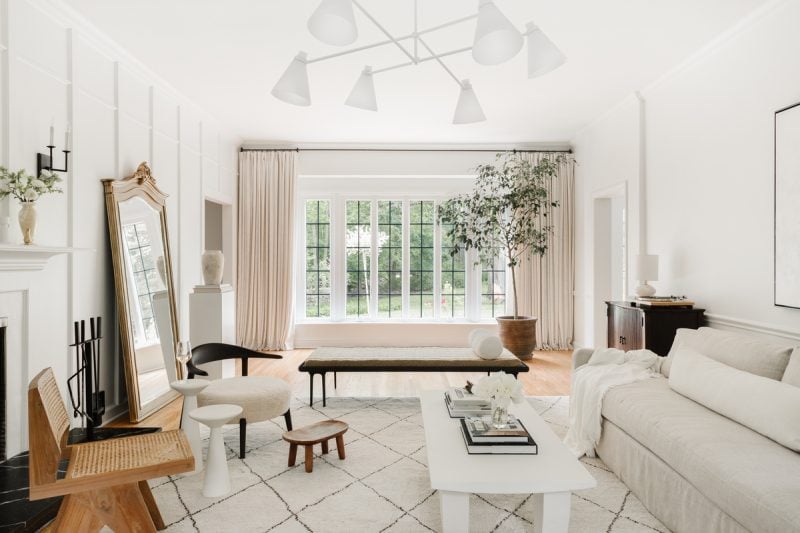
Until you’re a style-mixing pro, stick to a simple, understated color palette so that you can reign in the overall design. Mixing furniture from three different eras looks less eclectic and overwhelming if the overall palette is neutral. An all neutral palette with a single pop of color, or three complementary colors with natural finishes, are both a great place to start.
From mixing furniture styles to perfecting room flow, our designers are chock-full of expert tips. Check out our design packages to work with a design pro one-on-one.

